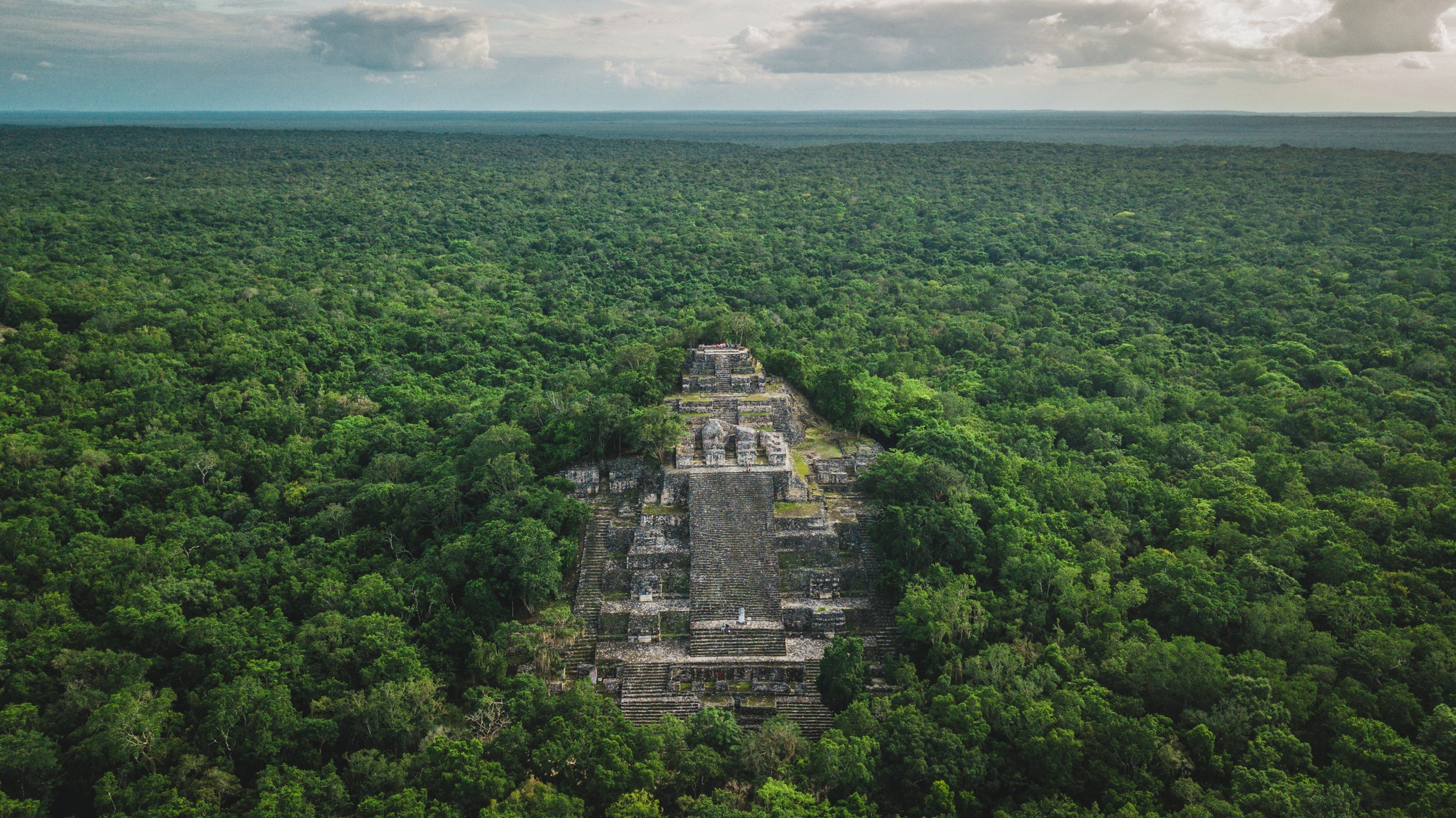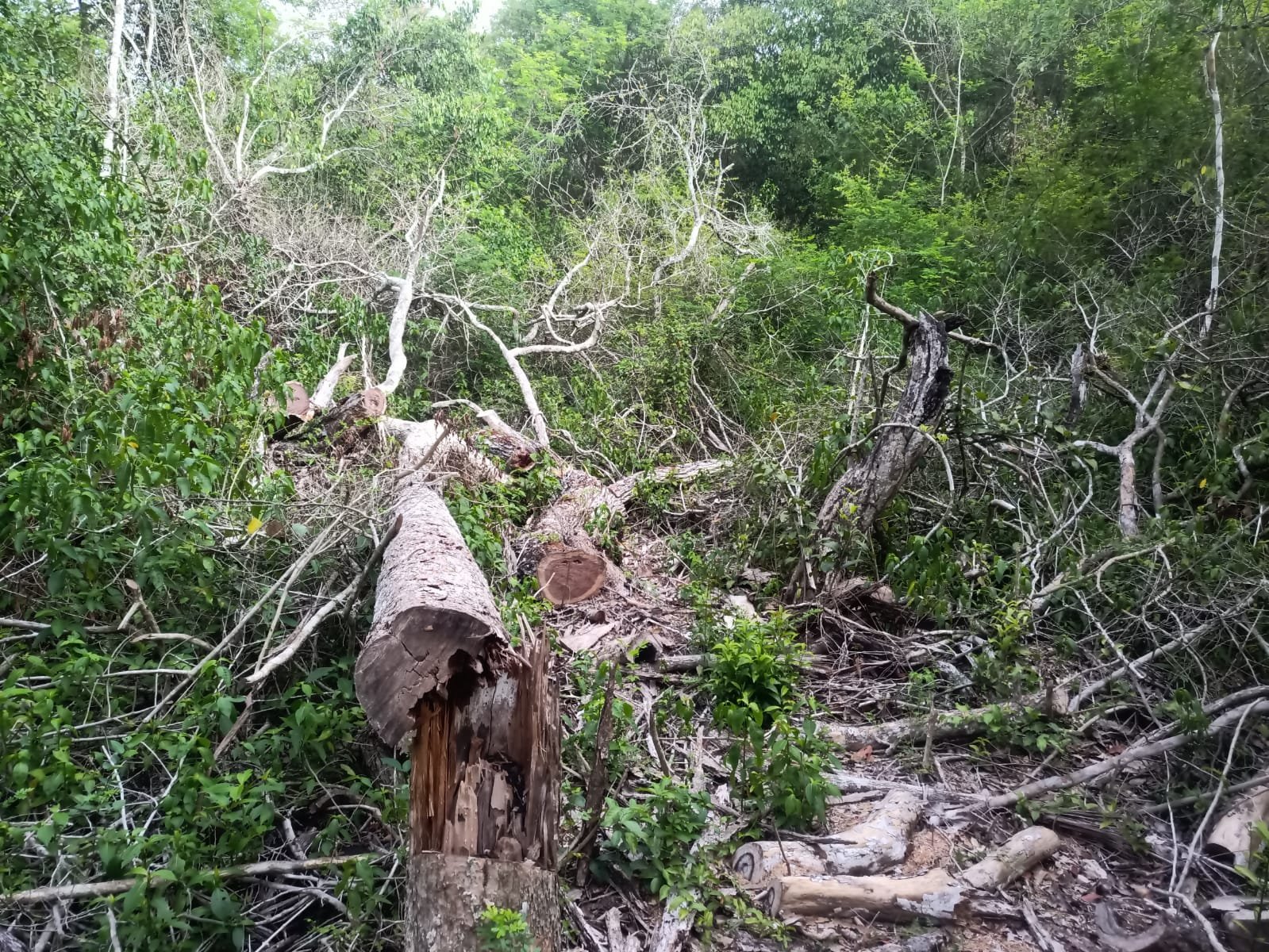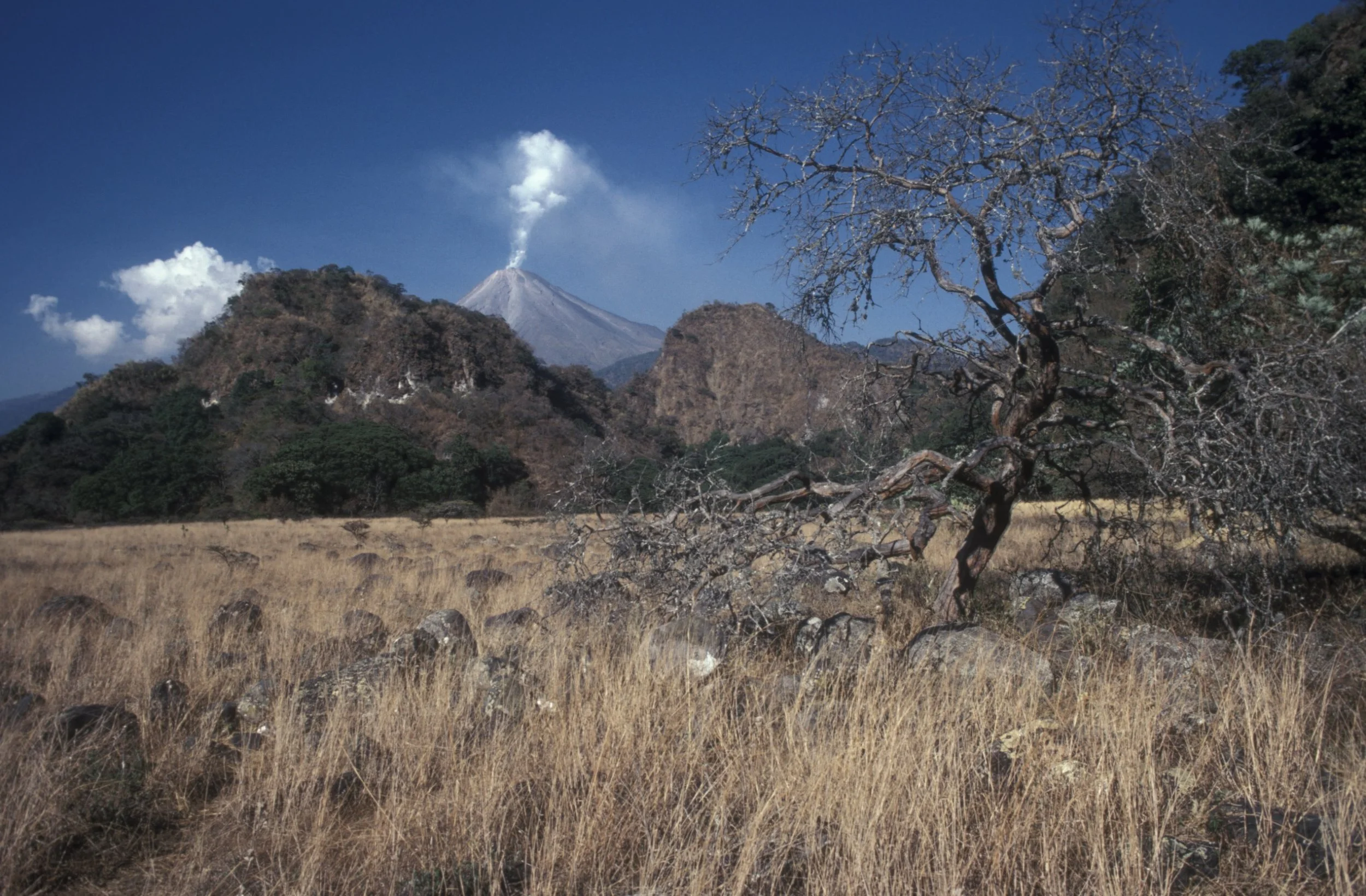Calakmul Biosphere Reserve, Mexico
OVERVIEW
In the depths of the Yucatán Peninsula lies Calakmul Biosphere Reserve, a place where the wild heart of the Selva Maya pulses with life and history. This expansive park shelters ancient Maya ruins hidden beneath towering trees, and within its borders, jaguars roam freely, a rare glimpse into a world where nature and culture are inextricably linked.
As part of the Maya Biosphere Reserve, Calakmul is not just a sanctuary for biodiversity but a living narrative of resilience and balance. Here, conservation efforts meet the challenge of preserving one of Central America’s most vital ecosystems while supporting the communities that call this region home.
SIZE
1.2 million Hectares
GOAL
$720,000
VISITORS BY 2027
42,000
Introduction
Calakmul Biosphere Reserve on Mexico’s Yucatan Peninsula stands as a vital stronghold for both natural and cultural heritage. Spanning over 723,000 hectares, this park is a crucial part of the transboundary Maya Biosphere Reserve, one of the largest remaining tropical forests in the Americas.
Calakmul is also a key component of the larger Selva Maya, a sprawling forest that stretches across Mexico, Guatemala, and Belize. This interconnected expanse is the largest tropical forest in Central America and the northernmost of its kind in the Western Hemisphere. The Calakmul Biosphere Reserve, together with the neighboring Maya Biosphere Reserve in Guatemala and the forests of Belize, forms a contiguous green corridor that is not only a critical refuge for wildlife but also a vital component in the global fight against climate change.
Efforts to protect Calakmul are increasingly important as the pressures of deforestation, illegal logging, and land conversion intensify. Conservation efforts, including the REDD+ program, are crucial in protecting this biodiverse hotspot and ensuring that the local Ejidos—indigenous landowners—can continue to steward the land sustainably.
Calakmul Biosphere Reserve is a place where natural and human histories are deeply intertwined. It is a landscape that speaks of resilience and continuity, where the ancient and the living are bound together in a shared narrative. As Global Conservation fights for the future of this region, the park remains a critical site for both biodiversity conservation and cultural preservation, offering lessons in how to coexist with the natural world.
Cultural Heritage
Calakmul is not just a haven for wildlife; it is a living museum of the Maya civilization. Scattered among the trees are the remnants of a once-great empire—temples and plazas, now reclaimed by the jungle, their stone surfaces weathered by time yet still whispering the stories of a civilization that flourished and fell within this very forest. The ancient city of Calakmul, once a powerful rival to Tikal, stands as a testament to the ingenuity and resilience of the Maya, who carved out their existence in harmony with the surrounding wilderness.
Natural History
Calakmul’s dense forest is home to a remarkable array of life. More than 1,600 plant species thrive here, representing more than 80% of the flora of the entire Yucatán Peninsula. Among these plants flit 350 species of birds, some of which use the forest as a stopover on their migratory paths. Nearly 100 species of mammals, including jaguars, quietly navigate the undergrowth alongside 50 species of reptiles, a sign of the forest's intact ecosystem. The forest is a living library of biodiversity, where the survival of countless species is tied to the health of the whole.
Calakmul is a key component of the Selva Maya, a sprawling forest that stretches across Mexico, Guatemala, and Belize, the largest tropical forest in Central America.
Threats to Calakmul Biosphere Reserve
Calakmul Biosphere Reserve faces severe threats that jeopardize its ecological and cultural integrity. The rapid and ongoing changes in land use, along with the loss and degradation of the wider Maya Forest, continue to have direct and indirect impacts on the Calakmul World Heritage site. While wildlife populations in Calakmul remain notable, they are increasingly under pressure from poaching, trade, and habitat fragmentation. Recurrent forest fires and illegal logging further threaten the area. However, recent studies have confirmed that Calakmul is still a key region for the conservation of many species, such as the Baird's tapir.
The most pressing issue is illegal logging, which fragments the forest, disrupting critical habitats for species like jaguars. This logging is often tied to organized crime, complicating enforcement efforts. Land conversion for agriculture, driven by the need for economic development in surrounding communities, further exacerbates deforestation. The construction of new roads, intended to support local economies, has the unintended consequence of increasing access to remote areas, making the forest more vulnerable to illegal activities such as poaching and land clearing.
Moreover, the park’s rich archaeological sites are at risk from looting, driven by demand for artifacts on the black market. Drug trafficking routes that pass through the area also bring violence and further destabilize conservation efforts. These activities not only degrade the environment but also threaten the cultural heritage of the Maya civilization preserved within the park.
To combat these threats, conservation initiatives like GC’s Global Park Defense program are vital. This program uses advanced monitoring technologies and community engagement to protect the park's resources, ensuring that both its natural biodiversity and cultural treasures are preserved for future generations. However, ongoing challenges require sustained efforts and collaboration to protect this unique and irreplaceable landscape.
Calakmul and Mirador National Parks together boast over 100 major ancient Maya cities, immense temples and pyramids, and hundreds of miles of interconnected Mayan causeways, all in an area larger than Yellowstone.
Saving Calakmul
Calakmul's central location within the Maya Forest and its buffering by large protected areas, including those in Guatemala to the south, offer some protection. Nonetheless, forest loss and degradation in the region present ongoing risks to long-term conservation and landscape connectivity. Threats such as forest fires, illegal logging, and infrastructure projects, along with new tourism development plans, complicate conservation efforts. Tourism brings potential opportunities, but also challenges related to access roads, water, and waste management.
Global Conservation is working to expand the Calakmul Biosphere Reserve (a UNESCO World Heritage site) and to secure permanent protection for Mirador National Park in Petén, Guatemala, a core area of the Maya Biosphere and the cradle of Maya civilization.
Illegal logging, particularly of hardwoods along the Mexican-Guatemalan border, has been a persistent issue. FundaEco is partnering with Calakmul Biosphere Reserve authorities in Mexico to address this and other transboundary concerns. Collaboration between Guatemala and Mexico is critical for protecting the Selva Maya, an ecosystem that spans both countries.
An international partnership between Mexico and Guatemala has allowed joint patrols to combat cross-border crimes, including illegal logging and narcotrafficking. From June 2019 to June 2020, over 62 crimes were identified, resulting in 52 arrests. Rangers shut down a major illegal logging operation, arrested seven loggers, and confiscated equipment and a truck. As of February 2020, no further illegal logging had occurred.
“Without a doubt, the greatest achievement in control and protection is that from May 2020 to November 2021, no illegal loggers from Mexico entered Guatemala to cut trees. This is thanks to the efforts of the Genesis group and the constant patrols by park rangers. However, logging continues on the Mexican side.”
Our Objectives
Help secure the "Gran Calakmul" region, which will have a total of 1.5 million hectares and will be the second largest terrestrial tropical forest reserve in the world after the Amazon, in Brazil.
Study and protect jaguars and their prey. Jaguars are a species especially important for conservation because they are suffering large population declines and are a keystone species in their ecosystems. Amigos de Calakmul and FundaEco have deployed trailcam networks for estimation of predator and prey populations.
Deploy Global Park Defense, a multi-year method to achieve “No Cut, No Kill” protection and financial sustainability for continued preservation.
Work with local communities and local stakeholders to deploy Community Protection.
Critical Initiatives
SMART Ranger Patrols
We provide wildlife anti-poaching training, equipment, rations and technical support to Calakmul Biosphere Reserve rangers to implement SMART patrols, increasing coverage, accountability and interdictions of illegal activities.
Joint Patrolling with Mirador National Park
We are coordinating with Mirador National Park, Guatemala for effective trans-boundary wildlife protection and law enforcement. Joint patrols involve park authorities, military, and police, supported by Global Conservation and Friends of Calakmul. Hundreds of illegal loggers and wildlife poachers have been either arrested or interdicted.
Habitat Acquisition and New Protection for Core Wildlife Areas
There are highly important areas for wildlife habitat in Calakmul. Mapping and working to find funding for land acquisitions and implementing protection networks for these core areas is a high priority.
Conclusion
The Calakmul Biosphere Reserve is a vital refuge for biodiversity and cultural heritage in Central America. Home to endangered species like jaguars and ancient Maya ruins, it faces threats from deforestation, illegal logging, and infrastructure development. Conservation efforts, such as Global Park Defense and international collaboration between Mexico and Guatemala, are crucial in combating these pressures.
Initiatives involving community engagement, habitat protection, and anti-poaching enforcement are essential for preserving Calakmul’s ecological and cultural significance. With sustained efforts, this unique landscape can continue to protect both wildlife and ancient history for future generations.
Global Conservation initiatives rely on your generosity and commitment. Please join us: your contributions fund essential operations like anti-poaching patrols, wildlife rehabilitation, and community outreach programs. Join us in this vital mission — act now to preserve Calakmul Biosphere Reserve and make a lasting impact.
Partners in Conservation
The Amigos de Calakmul (ACAC) Community Forestry REDD+ Project provides critical resources and incentives for the indigenous landowner communities, known as Ejidos, to protect their forests through the sale of carbon credits and other funding sources. In order to provide a viable income alternative to leasing their land for unsustainable practices, ACAC offers competitive, permanent conservation lease agreements with the Ejidos. These agreements allow the Ejidos to maintain ownership of their forests and require them to refrain from engaging in environmentally destructive activities. In return, combined with profits generated from the sale of carbon credits, the conservation agreements ensure that Ejidos receive annual compensation that is either equivalent to or, in many cases, greater than what they would receive from leasing their land to a logging operation.
FundaEco, which is involved in Calakmul and Mirador’s joint patrols, is a private nonprofit dedicated to the creation, management, protection and conservation of Guatemala's protected areas. It has spent the past 25 years helping communities find socioeconomic alternatives to destructive land uses.





















